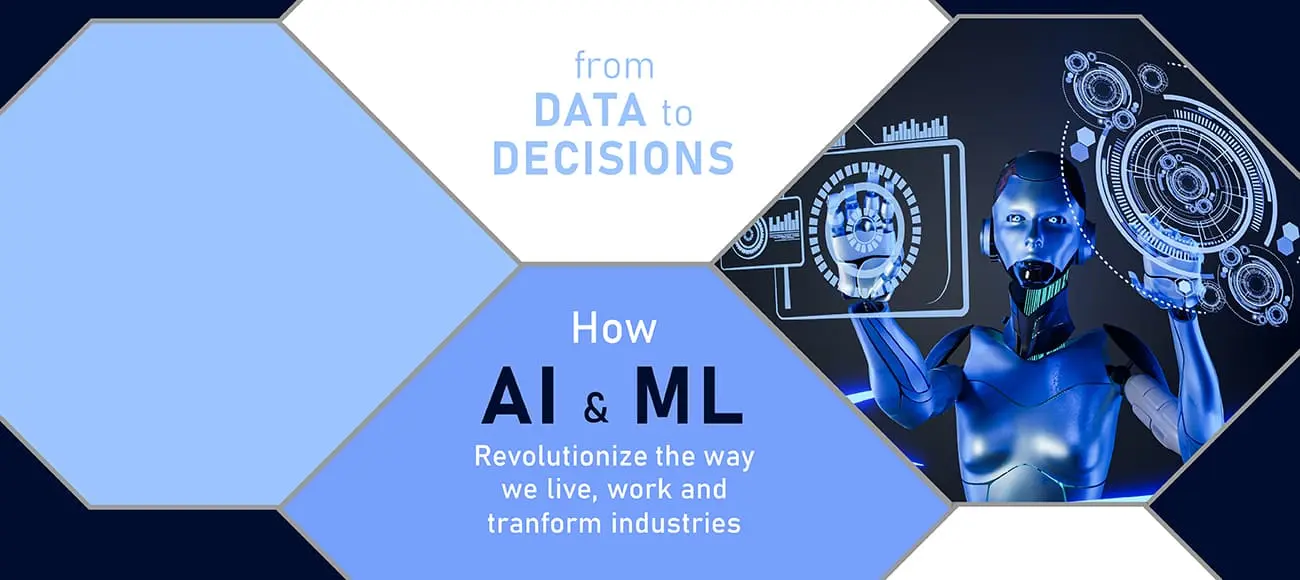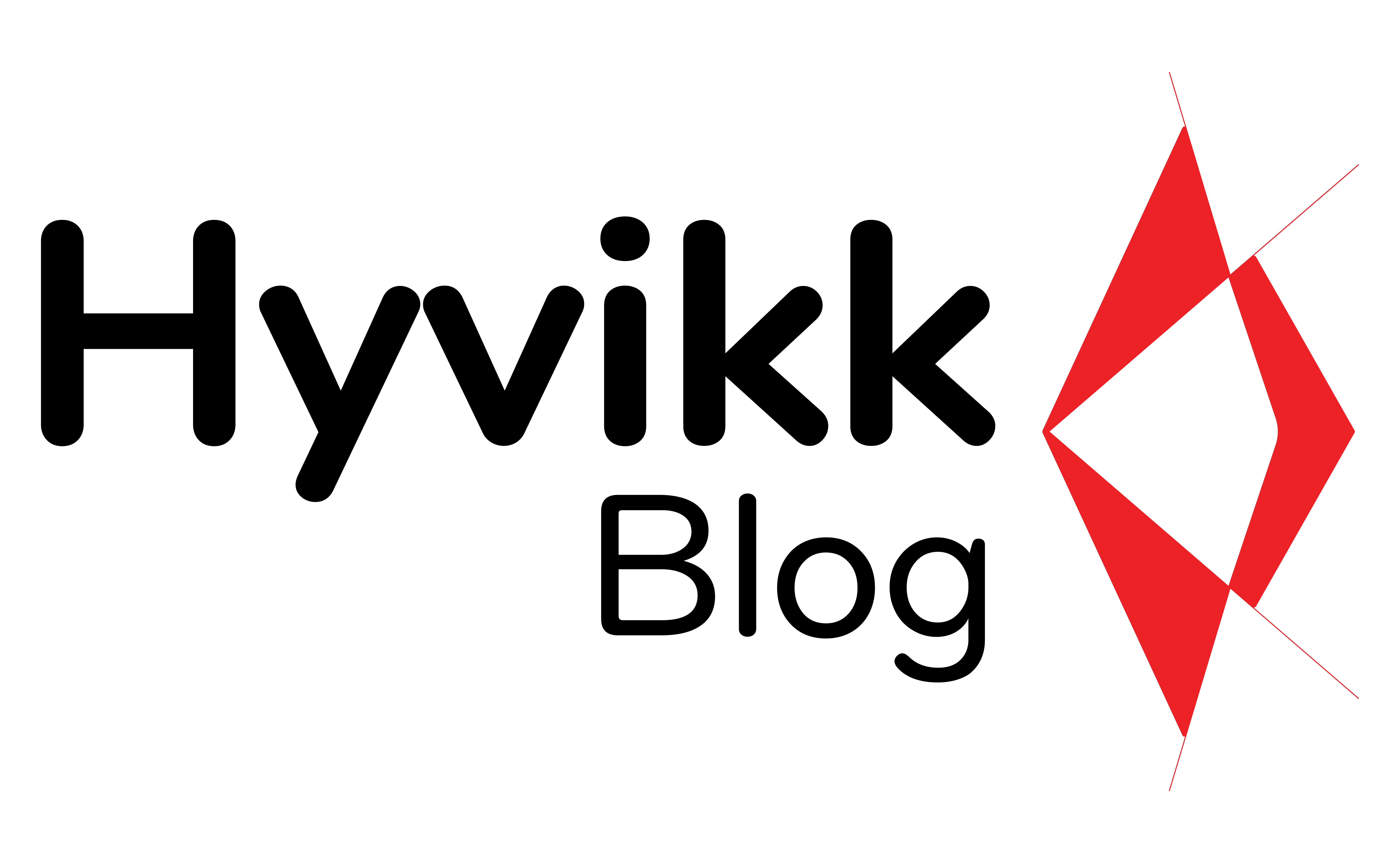
04 Aug Harnessing the Power of AI and ML: Transforming the World Through Intelligent Automation
In the era of digital transformation, Artificial Intelligence (AI) and Machine Learning (ML) have emerged as revolutionary technologies that are reshaping industries and driving innovation. AI and ML enable computers to learn from vast amounts of data, make intelligent decisions, and automate complex tasks. Delving into the definitions, capabilities, and real-world applications of AI and ML, Hyvikk blog uncovers the captivating realm they inhabit, while also addressing the ethical considerations entwined with their utilization.
Understanding Artificial Intelligence:
Artificial Intelligence encompasses the creation of intelligent machines that possess human-like abilities such as perception, reasoning, learning, and decision-making. AI encompasses a broad range of technologies, including machine learning, natural language processing, computer vision, and robotics. Machine Learning, a subset of AI, focuses on training algorithms to recognize patterns in data and make predictions or decisions without explicit programming.
Machine Learning: The Brains Behind AI
Machine Learning plays a vital role in AI by providing the ability to learn and improve from experience. ML algorithms analyze large datasets, identify patterns, and develop models that can make accurate predictions or classifications. In the field of ML, common approaches include supervised learning, unsupervised learning, and reinforcement learning.
Supervised learning involves training algorithms using labeled data, where the desired output is provided. This allows the algorithm to learn from examples and make predictions on new, unseen data. Unsupervised learning, on the other hand, involves finding patterns and structures in unlabeled data, enabling the algorithm to discover insights and make sense of complex information. Reinforcement learning revolves around training an algorithm to interact with an environment and learn through positive or negative feedback, optimizing its actions to maximize a reward.
Real-World Applications of AI and ML:
The applications of AI and ML are vast and diverse, transforming industries and driving innovation across sectors. In healthcare, AI and ML are revolutionizing disease diagnosis, drug discovery, and personalized medicine. These technologies enable doctors to analyze medical images, predict patient outcomes, and identify potential treatments.
In finance, AI and ML algorithms analyze vast amounts of financial data to detect patterns, predict market trends, and automate trading decisions. Fraud detection systems leverage ML to identify suspicious activities and protect customers from financial fraud.
In manufacturing, AI and ML are used for predictive maintenance, optimizing supply chains, and improving overall efficiency. By analyzing data from sensors and machines, AI systems can identify potential failures and schedule maintenance before breakdowns occur, reducing downtime and costs.
Ethical Considerations and Future Implications:
The rapid advancement of AI and ML technologies raises important ethical considerations. One significant concern is the potential for bias and discrimination in AI systems. If trained on biased data, algorithms can perpetuate or amplify existing societal biases, leading to unfair decisions or outcomes. Efforts are being made to develop fair and transparent algorithms, ensuring that AI systems treat all individuals equitably.
Privacy and security are also critical considerations in the era of AI. With the vast amounts of data being collected and analyzed, there is a need to ensure the protection of personal information and prevent unauthorized access or misuse. Regulations and frameworks are being developed to safeguard privacy rights and establish responsible data practices.
As AI and ML continue to advance, there are concerns about the impact on the job market. While some repetitive tasks may be automated, new job roles will emerge, requiring skills in data analysis, algorithm development, and AI system management. Education and upskilling initiatives are essential to prepare individuals for the changing job landscape.
Looking ahead, the potential of AI and ML is boundless. Advancements in natural language processing and computer vision are driving the development of intelligent virtual assistants and autonomous vehicles. AI systems are being used to tackle complex challenges such as climate change, disease prevention, and sustainable energy management. The fusion of AI with other emerging technologies like robotics and Internet of Things (IoT) is opening up even more possibilities.
Conclusion:
Artificial Intelligence and Machine Learning are transforming industries, revolutionizing decision-making, and automating complex tasks. The ability of these technologies to learn from vast amounts of data and make intelligent decisions is driving innovation and propelling us into a future that was once confined to science fiction. However, with this power comes responsibility. It is crucial to address the ethical considerations surrounding AI, ensuring fairness, transparency, and privacy in its implementation. By embracing the potential of AI and ML while addressing the associated challenges, we can harness the power of these technologies to create a future that is more intelligent, efficient, and inclusive.

Sorry, the comment form is closed at this time.